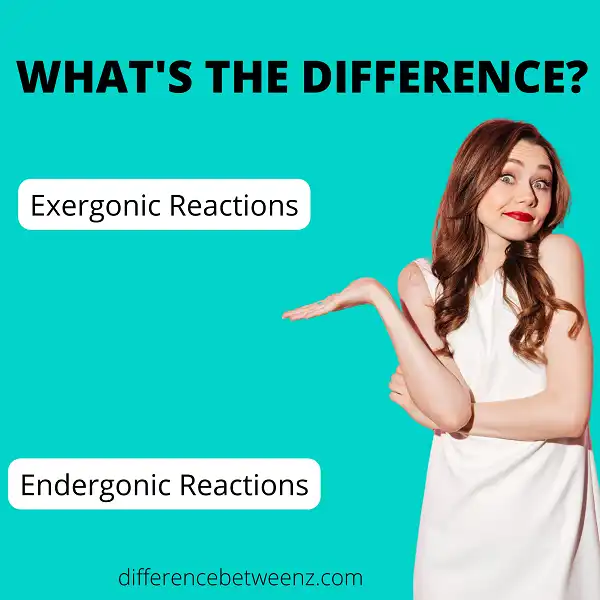We all know that energy is necessary for life. But where does this energy come from? The answer lies in the difference between exergonic and endergonic reactions. In this post, we’ll explore what these terms mean, and look at some examples of each. We’ll also discuss how energy is transferred in these reactions, and what implications they have for our everyday lives. So let’s get started!
What are Exergonic Reactions?
Exergonic reactions are chemical reactions that result in the release of energy. In most cases, this energy is released in the form of heat. Exergonic reactions can occur naturally, such as when wood burns or they can be induced by external forces, such as when a battery is used to power an electronic device. Exergonic reactions are vital to many biological processes, including muscle contraction and cell division. Without exergonic reactions, life as we know it would not be possible.
What are Endergonic Reactions?
- Endergonic reactions are chemical reactions in which the products have more potential energy than the reactants. This excess potential energy is typically in the form of heat or light. Endergonic reactions are the opposite of exergonic reactions, in which the products have less potential energy than the reactants.
- One example of an endergonic reaction is photosynthesis, in which light energy is used to convert water and carbon dioxide into glucose and oxygen. The products of this reaction (glucose and oxygen) have more potential energy than the reactants (water and carbon dioxide). Another example of an endergonic reaction is the synthesis of ATP, the energy storage molecule used by cells.
- In this reaction, ATP is synthesized from ADP and inorganic phosphate using chemical energy from another exergonic reaction. Endergonic reactions are often coupled with exergonic reactions, in which the energy released by the exergonic reaction is used to drive the endergonic reaction. Endergonic reactions are essential for many biochemical processes, including metabolism, cell growth, and muscle contraction.
Difference between Exergonic and Endergonic Reactions
Exergonic reactions are reactions that release energy, while endergonic reactions are reactions that require an input of energy. The terms exergonic and endergonic describe the overall energetics of a reaction, not the specific details of how that reaction occurs.
- Exergonic and endergonic reactions can both be spontaneous, meaning that they will occur without any external input of energy. However, exergonic reactions will always have a negative enthalpy (-ΔH), while endergonic reactions will always have a positive enthalpy (ΔH).
- Exergonic reactions are often associated with being “downhill” or “unfavorable”, while endergonic reactions are often associated with being “uphill” or “favorable”. In general, exergonic reactions are more likely to occur than endergonic reactions.
- This is because the universe tends to move from a state of higher entropy (more disorder) to lower entropy (less disorder). Exergonic reactions tend to increase entropy, while endergonic reactions tend to decrease entropy.
As a result, exergonic reactions are more likely to be spontaneous and endergonic reactions are less likely to be spontaneous. Exergonic and endergonic reactions can both be catalyzed, meaning that they can be made to occur more quickly with the help of a catalyst. Catalysts work by lowering the activation energy of a reaction, making it easier for the reaction to occur.
Conclusion
Exergonic reactions release energy, whereas endergonic reactions require energy. In terms of biochemistry, an exergonic reaction is a process in which a chemical species gains more free energy than it loses while an endergonic reaction is one in which a chemical species loses more free energy than it gains. When you think about it, this makes sense – if something releases energy, that would be considered “exergic” or active, and if something requires energy to happen that would be considered “endergic” or passive.


